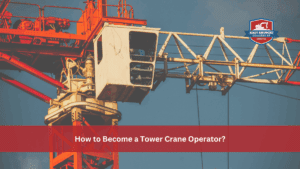Want to know what it takes to be a successful nighttime crane operator? Keep reading to learn more about the unique challenges of and solutions for this type of crane operation.
Table of Contents
Can You Operate a Crane at Night?
While crane operation is ideal during daylight hours, some cranes are designed specifically for nighttime operation. They’re equipped with specialized lights and other equipment to ensure safe and efficient operation.
However, nighttime crane operation presents unique challenges. Be aware of your surroundings at all times, and take your time when operating a crane at night to protect yourself and others from harm.
6 Factors to Consider When Operating a Crane at Night
Although particular cranes are designed for nighttime use, operators should implement key safety practices to prevent equipment damage and worker injury. Here are six factors to consider for safe nighttime crane operation.
- Visibility: Ensure adequate lighting, and remove any obstructions.
- Noise Level: Minimize noise production to prevent disturbances during operation.
- Proper Training: Before operating a crane, you must be certified to operate that particular crane type.
- Safety Guidelines: Abide by all OSHA safety guidelines and those provided in the crane manufacturer’s manual.
- Spotter: We recommend having a spotter during crane operation as an added safety precaution. This individual provides directions to the operator to help them guide the crane.
- Risk Assessment: Identify potential risks involved in the project at hand, and have a game plan in mind if you were to encounter one.
Challenges of Night Rigging
Here are the primary challenges any nighttime crane operator should be aware of:
- Limited Visibility: Poor lighting makes seeing the crane, the load, and your surroundings more difficult.
- Increased Risk of Accidents: Accidents are more likely to occur due to limited visibility, excess noise, and worker exhaustion.
- Difficulty Communicating: Limited visibility makes it more difficult for operators and spotters to communicate with one another, which can increase the risk of accidents occurring.
Operators who don’t address these challenges increase the risk of:
- Damaging equipment, which creates financial loss
- Putting workers at a greater risk of injury or even death
- Decreasing project efficiency, which lengthens the completion timeline

How to Become a Tower Crane Operator?
Tower crane operation is a specialized career that requires technical training, physical readiness, and nationally recognized certification. It’s a path well-suited for those who want

Checklist for Setting Up a Self-Erecting Tower Crane
As the name suggests, self-erecting tower cranes take some of the hassle out of assembling cranes the size of skyscrapers. However, every operator still needs

How To Become an HVAC Technician?
If you prefer working with your hands rather than being stuck at a desk, a career in HVAC might be a great fit for you.
Solutions for Safe & Efficient Nighttime Rigging
Appropriate Lighting Equipment & Techniques
Ensure the work zone and the crane itself are well-lit. Optimal visibility is essential for equipment preservation and worker safety. You should also ensure the work zone is free from any obstructions—like power lines and other equipment—before operating the crane.
Clear Communication & Coordination Among the Rigging Team
Know the proper hand signals designed for crane operation, which communicate:
- Which direction to travel
- When to swing and lift the boom
- When to hoist and lower the load
- When to stop the crane
When it comes to night rigging, though, radio communication is more reliable than hand signals due to limited visibility and excess noise levels.
Specialized Equipment & Safety Gear
Nighttime crane operators should utilize the right equipment safety gear and personal protective equipment (PPE):
- Proper lighting, including reflectors
- Machine guards
- Slip-resistant steps
- Radios
- Hard hats
- Headlamps
- Safety glasses
- Safety vests
- Boots
- Gloves
Adequate Training & Preparation for Nighttime Rigging
Follow all crane safety protocols that are outlined in the manufacturer’s operator manual. These protocols outline:
- Load and lift capacities
- Safety mechanisms
- Stabilizers and counterweights
- Cab controls
Operators should also follow all Occupational Safety and Health Administration (OSHA) guidelines.
4 Tips for Crane Operators Working in These Conditions
Here are our top four tips to ensure equipment longevity, worker safety, and project efficiency.
- Conduct a thorough risk assessment
- Ensure proper lighting and visibility
- Follow safety protocols and procedures
- Maintain clear communication and coordination
OSHA Guidelines for Rigging at Night
OSHA 1926.1427 outlines the following training and certification requirements for mobile crane operators.
General Requirements
The employer must ensure that each operator is trained, certified/licensed, and evaluated in accordance with this section before operating any equipment other than derricks, sideboom cranes, and equipment with a maximum manufacturer-rated hoisting/lifting capacity of 2,000 pounds or less.
Operator Training
Employers must provide each operator-in-training with sufficient training, through a combination of formal and practical instruction, to ensure that the operator-in-training develops the skills, knowledge, and ability to recognize and avert risk necessary to operate the equipment safely for assigned work.
Complete Mobile Crane Training in as Little as Three Weeks
If you want to become a certified crane operator, the first step is to receive proper mobile crane training. As an accredited heavy equipment training provider, Heavy Equipment Colleges of America (HEC) offers the specialized programs you need to prepare yourself for a career as a mobile crane operator.
Take the first step today by enrolling in our Mobile Crane training program, which provides training for lattice boom cranes and other mobile crane types.

